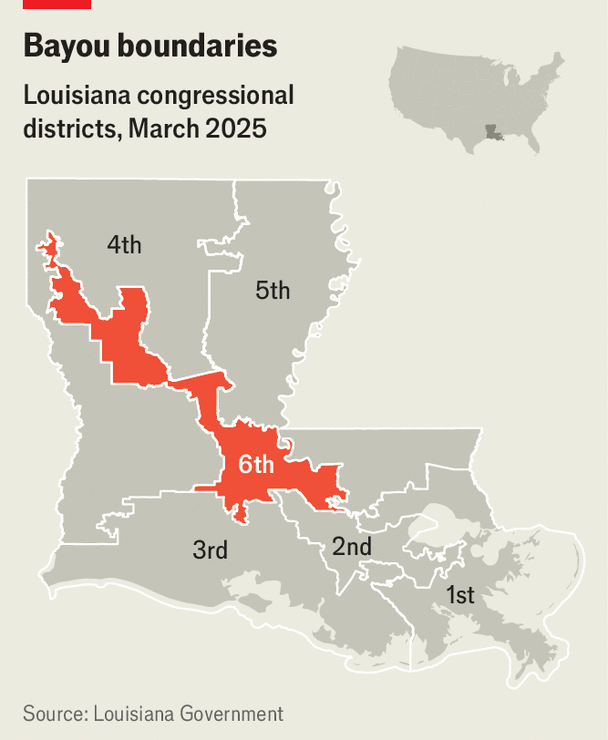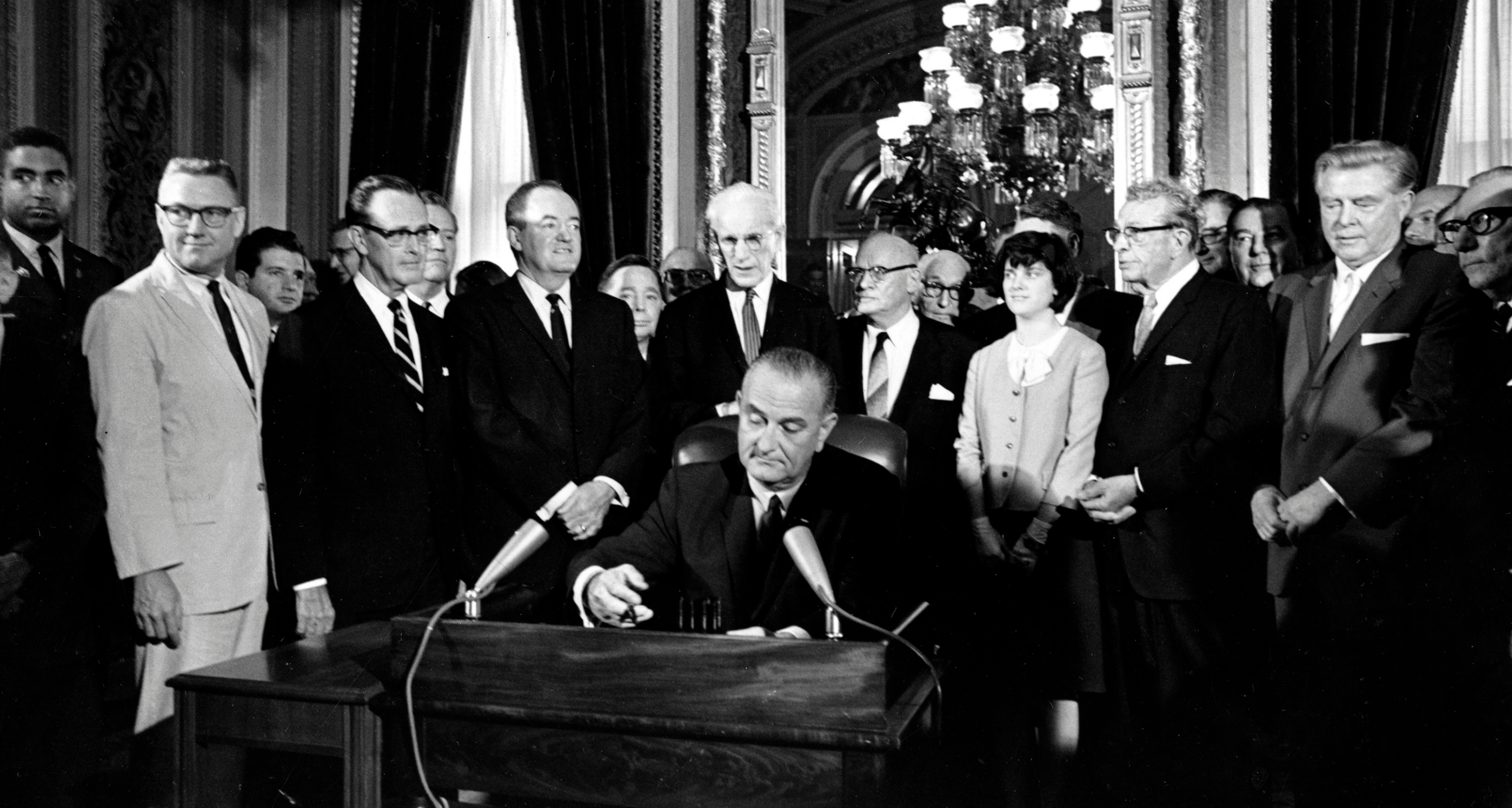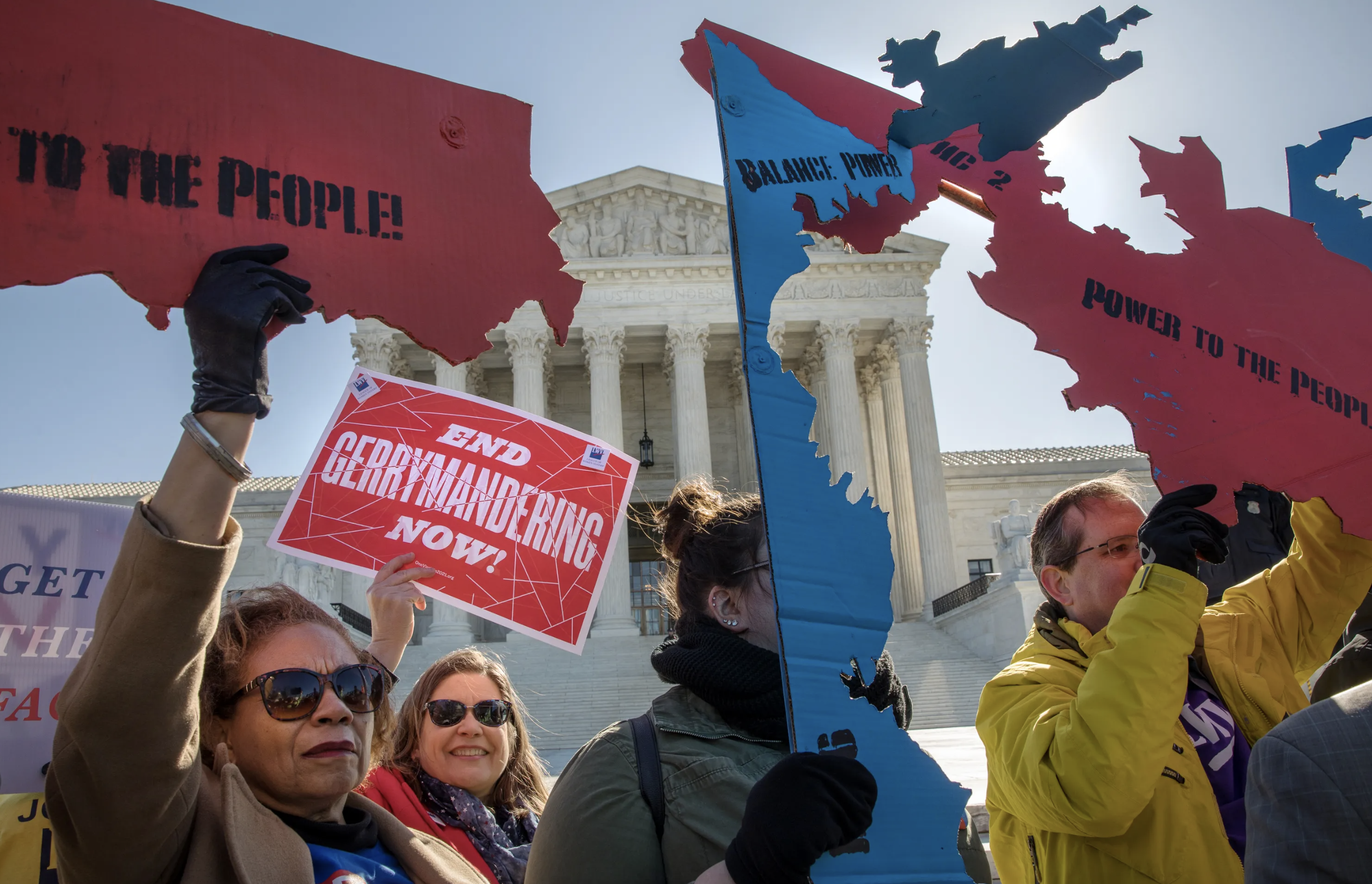Today’s post is written by Jason Steorts, managing editor of The Preamble. He offers an alternative way to look at Louisiana v Callais — one that differs from the view presented by legal scholar Leah Litman yesterday. I’d love to hear what you think in the comments.
—Sharon
When we make uncharitable assumptions about people, they often become harder to understand. Seen through the lens of worst-case fears, their thoughts and motivations can get distorted to the point of falsity. Such has at times been my impression in reading about Louisiana v. Callais, a Supreme Court case that will be decided in the coming weeks.
Callais involves the state of Louisiana on one side and a group of non-Black voters on the other. Louisiana is defending its congressional-district map. In a 2020 redistricting, the state drew lines that made five of the state’s six districts majority-white. A group of Black plaintiffs challenged that plan under the Voting Rights Act, noting that one-third of the state’s population was Black. A district court preliminarily found that the plaintiffs were “likely” to prevail. At that point, the legislature chose to draw new boundaries creating two majority-Black districts, one of which stretches narrowly across much of the state.

Louisiana says it drew the district that way mainly to protect the congressional seats of several high-profile members of the House of Representatives, including Mike Johnson, Julia Letlow, and Steve Scalise. But a group of non-Black voters sued, saying that the new district was actually an unconstitutional racial gerrymander. A district court agreed with them, and these voters now ask the Supreme Court to uphold its decision.
In yesterday’s edition of The Preamble, University of Michigan law professor Leah Litman expressed a common criticism of the non-Black voters: that they are trying “to launder white racial grievances against Black voters into the law of the land.”
But there is an entirely different way of looking at them — one rooted in an honorable history of 14th Amendment thinking that rightly abhors governmental distinguishing of citizens by race. In light of that legal tradition, we should not assume the non-Black voters are racists bent on preserving white political power. Perhaps, as their brief says, they object to Louisiana’s failure to grant them the color-blind equal treatment that our Constitution demands for all citizens.
To understand them, we first have to understand the historical and legal context of the case. There is a shameful history of certain jurisdictions’ diluting the voting power of racial minorities by “packing” or “cracking” them. “Packing” means putting minority voters into a single district so that they do not form a majority in more districts than one. “Cracking” means dividing them into several districts where they are the minority so that they cannot be the largest group in any single district.

Section 2 of the Voting Rights Act forbids this. It prohibits “the denial or abridgment of the right of any citizen of the United States to vote on account of race or color” (even if the denial or abridgment was unintended). A district map that diluted the votes of a minority would run afoul of Section 2, and courts would demand that the state correct its error. But, importantly, the point of Section 2 is not to secure racially proportional representation in Congress. It even says this: “Nothing in this section establishes a right to have members of a protected class elected in numbers equal to their proportion in the population.”
In fact, proportional racial representation would violate the Constitution. The Supreme Court made this clear when it addressed racial gerrymandering in a previous case. In Shaw v. Reno, the Court’s majority wrote that the “central purpose” of the 14th Amendment’s Equal Protection Clause “is to prevent the States from purposefully discriminating between individuals on the basis of race.” As a result, “laws that explicitly distinguish between individuals on racial grounds fall within the core of this prohibition.” And that includes racial gerrymanders, which separate voters by race. A state legislature that said, You Black voters get two districts, and you white voters get three districts, since these numbers reflect your shares of the population, would be violating the Constitution. Race-conscious redistricting, in other words, is permissible only as a remedy for the prior dilution of minority voters. The normal expectation is that nonracial criteria (such as geographic compactness, the preservation of natural and political boundaries, and the protection of incumbent legislators) will prevail. If those criteria produce a majority-Black district or a majority-white district, so be it — but proportional representation cannot be the aim.
In another case, Thornburg v. Gingles, the Court outlined a three-part test to determine whether a district impermissibly dilutes the voting power of a minority group:
The minority group must be “sufficiently large and geographically compact to constitute a majority in a single-member district.”
It must be “politically cohesive.”
The white majority must vote “sufficiently as a bloc to enable it… usually to defeat the minority’s preferred candidate.”
For our purposes, what matter are the words “geographically compact.” It’s true, as I said above, that a district court found that Louisiana’s original reapportionment plan, which had only one majority-Black district, likely violated Section 2. But what often goes unmentioned is that an error-review panel for the Fifth Circuit Court of Appeals said the district court had erred in its compactness analysis: it had not properly taken into account that throughout most of Louisiana the Black population is dispersed rather than concentrated.
And when the non-Black voters in Callais sued to stop the revised redistricting plan (with two majority-Black districts), it was precisely this lack of compactness that led a different district court to decide in their favor: Section 2 did not require a second majority-Black district after all, it said, and the district Louisiana created was an unconstitutional racial gerrymander.

The Callais story gets oversimplified in other ways. As I said above, critics of the non-Black voters maintain that the congressional district has its sinuous shape not for racial reasons but because state legislators wished to protect incumbent members of Congress. But this is highly disputed. The voters argue that even if the desire to protect incumbents determined the final shape of the district, Louisiana would not have been in the business of drawing new districts at all if it had not erroneously conceded that the Voting Rights Act required creating a second majority-Black district. And after reviewing the legislative record and hearing expert testimony, the district court that decided in the non-Black voters’ favor concluded that race had indeed been the predominant factor in shaping the district.
The critics’ greatest error, though, is to assume that the Callais group is making zero-sum racial calculations in which gains for Black voters are losses for white voters and vice versa. They nowhere claim or imply that white districts should be the norm. They do not even acknowledge racial districts as a category, since the legal tradition to which they appeal refuses to carve the citizenry into racial voting blocs in the first place. The understanding of the Callais voters that is consistent with their briefs — which refer repeatedly to our “color-blind Constitution” — is that they sued Louisiana not as white citizens aggrieved by the loss of white political power, but as citizens wrongly subjected to racial classifications at all.
In her opinion for the Court in Shaw v. Reno, Justice Sandra Day O’Connor draws this distinction clearly. The appellants in that case had similarly objected to a majority-Black district in North Carolina as an unconstitutional racial gerrymander. “An understanding of the nature of appellants’ claim is critical to our resolution of the case,” O’Connor wrote. “In their complaint, appellants did not claim that the General Assembly’s reapportionment plan unconstitutionally ‘diluted’ white voting strength. They did not even claim to be white. Rather, appellants’ complaint alleged that the deliberate segregation of voters into separate districts on the basis of race violated their constitutional right to participate in a ‘color-blind’ electoral process.”

Why is the right to color-blind redistricting important? O’Connor gives several reasons. Racially defined districts reinforce stereotypes by suggesting that all members of a racial group “think alike, share the same political interests, and will prefer the same candidates at the polls.” Such districts may send to elected representatives the message “that their primary obligation is to represent only the members of that group, rather than their constituency as a whole.” And racial gerrymandering undermines equality and national cohesion; here O’Connor quotes Justice Willian O. Douglas, whose words from 1964 remain powerful today:
“The principle of equality is at war with the notion that District A must be represented by a Negro, as it is with the notion that District B must be represented by a Jew, District D by a Catholic, and so on…
When racial or religious lines are drawn by the State, the multiracial, multireligious communities that our Constitution seeks to weld together as one become separatist; antagonisms that relate to race or to religion rather than to political issues are generated; communities seek not the best representative but the best racial or religious partisan. Since that system is at war with the democratic ideal, it should find no footing here.”
Such thoughts are, admittedly, in tension with today’s focus on racially equitable outcomes; “color-blindness” has even become something of a dirty word, suggesting indifference to the legacies of racism. The persistence of racial inequities does force us to take a hard look at how systems and social structures perpetuate injustice even when no one intends this, and I do not mean to say that we should never consider race.
For example, researchers have found that minority neighborhoods in large cities tend to have fewer pharmacies (as do rural areas). Trying to reach patients in these “pharmacy deserts” through alternative means (such as mobile clinics) does not require setting one race against another in zero-sum calculus. Race instead is a shorthand for identifying underserved populations, applied in the belief that all individuals equally deserve health-care access.
But when it comes to the equality of citizens before the law and as participants in our democratic republic, nothing but color-blindness will do. Anything else makes us, rather than a nation of equal individuals, a collection of blocs who vie against one another because our interests are necessarily opposed: the only way for me to have my white opportunity district is for you not to have your Black one.
And while critics of color-blindness are correct that it can make us blind to systemic injustices, perhaps we could also consider its benefits. I experienced them almost by accident once. When I was younger, I lived for a while in Brazil. There was a simultaneous effortlessness and depth in many of the friendships I made there, and I think this was partly because the difference between my cultural and linguistic background and theirs made it hard for us to size each other up.
Social clues like the grammaticality of someone’s speech, a person’s regional origin, alma mater, taste in music, and so on were largely unavailable. This applied even to race. It was noticeable and almost shocking to me the first time I consciously thought of someone in Brazil as Black. Until then, it had been natural not to mentally assign people to racial groups — in part, no doubt, because the population was quite mixed, but in part because I saw people as simply Brazilians, a category that had begun for me as a blank. What filled it were particular moments with unique human individuals.
I think it’s good whenever the citizens of our racially tortured nation can approach one another in similar innocence. The less we assume that success for your group requires failure for mine — in the polling booth or anywhere else — the easier that becomes.